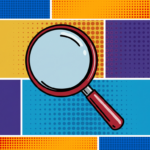It’s strange to think about, but probably true: Hiding in your donor database, there’s someone who has a lot of money and a propensity to make charitable gifts, including to your organization …
… but they’ve never made a large gift to you.
There could be several people like that. They have the wealth to be major donors, and they know about your organization … but it isn’t coming together in the form of the gifts they could be giving.
There are two main reasons someone with large-gift capacity may be giving you only small donations:
- They just don’t have the passion for what you do. It’s not you, it’s them.
- They haven’t been asked — or asked properly — for a large gift. It’s not them, it’s you.
The trouble is, it’s next to impossible to know for sure which is the case with any given high-capacity but low-donation donor.
Major donors are critical to the success of your organization. But they rarely come to you with their hand raised, saying, “Hello, I’m a major donor, and I’d like to make some major gifts!”
Sorting it out is one of the most important jobs we do as fundraisers.
Here’s the most important thing to know about major donors: Most major donors — more than 90% of them — start their relationships with charities by making smaller gifts, usually through direct mail. Some of these “hidden” major donors are consciously (and some unconsciously) “auditioning” you with smaller gifts. If they have a good experience, they just might upgrade.
You need to give these donors reasons to increase their giving to the level of their capacity, whatever that is.
But how do you do that?
Do these things for all donors:
- Thank donors for their gifts promptly, powerfully and personally.
- Do a great job at reporting back on the impact of their giving.
- Get their details right and use personalization where you can.
- Have superb donor service.
- Encourage donors to talk to you and ask questions.
- Do excellent fundraising that’s relevant, donor-focused, and action-oriented.
These things are smart fundraising, and doing them will maximize revenue and donor retention at all levels.
You’ll also signal to those hidden major donors that you might be one of those organizations that should rise to the top of their giving portfolio.
You’ll know your smart fundraising has worked when you see a higher donation. They usually don’t go straight from $50 to five or six figures. But the moment you see someone upgrade to the level above your general donors, you should respond by doing these things:
- Make thank-you calls — from your CEO or other executives.
- More than one thank-you letter, and make them very nice!
- Create higher-end, more-personalized versions of your fundraising campaigns for these donors.
- In some cases, try to meet with donors — by phone, online, or in person.
Invest. Spend more to get more.
These actions can show someone that your organization should rise to the top of their charitable giving list.
The number of donors who have the capacity to give those really gigantic donations is small. As a percentage of all your donors, it’s not much at all.
But there’s another group that’s considerably more numerous: Mid-value donors. The people between general donors and major donors. And they are important too.
Their higher giving amounts can also be transformational for your organization.
And some of them are slowly building toward major donor status.
Treat these donors well, and you’ll encourage them to rise to wherever their financial capacity — and their passion for your cause — can take them.
Here’s the thing: Fundraising is not just about creating a bunch of campaigns and hoping they are successful.
It’s about creating upward paths for your donors.
Giving every donor good reason to rise to whatever level their capacity and passion allows.
When you build and maintain the upward path for all donors, the impact on revenue can be quick and powerful.
Want to know more about building this upward path for donors? Take Sean Triner’s Mid-Value Donor Super Course. It’s one of the courses available for all members of The Fundraisingology Lab. Find out more here.
Related Blog Posts:










